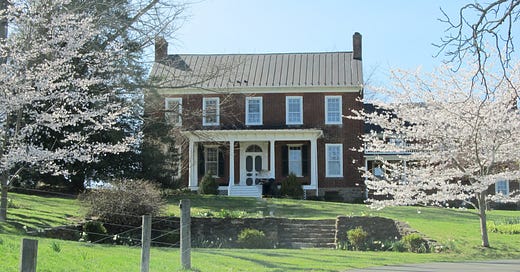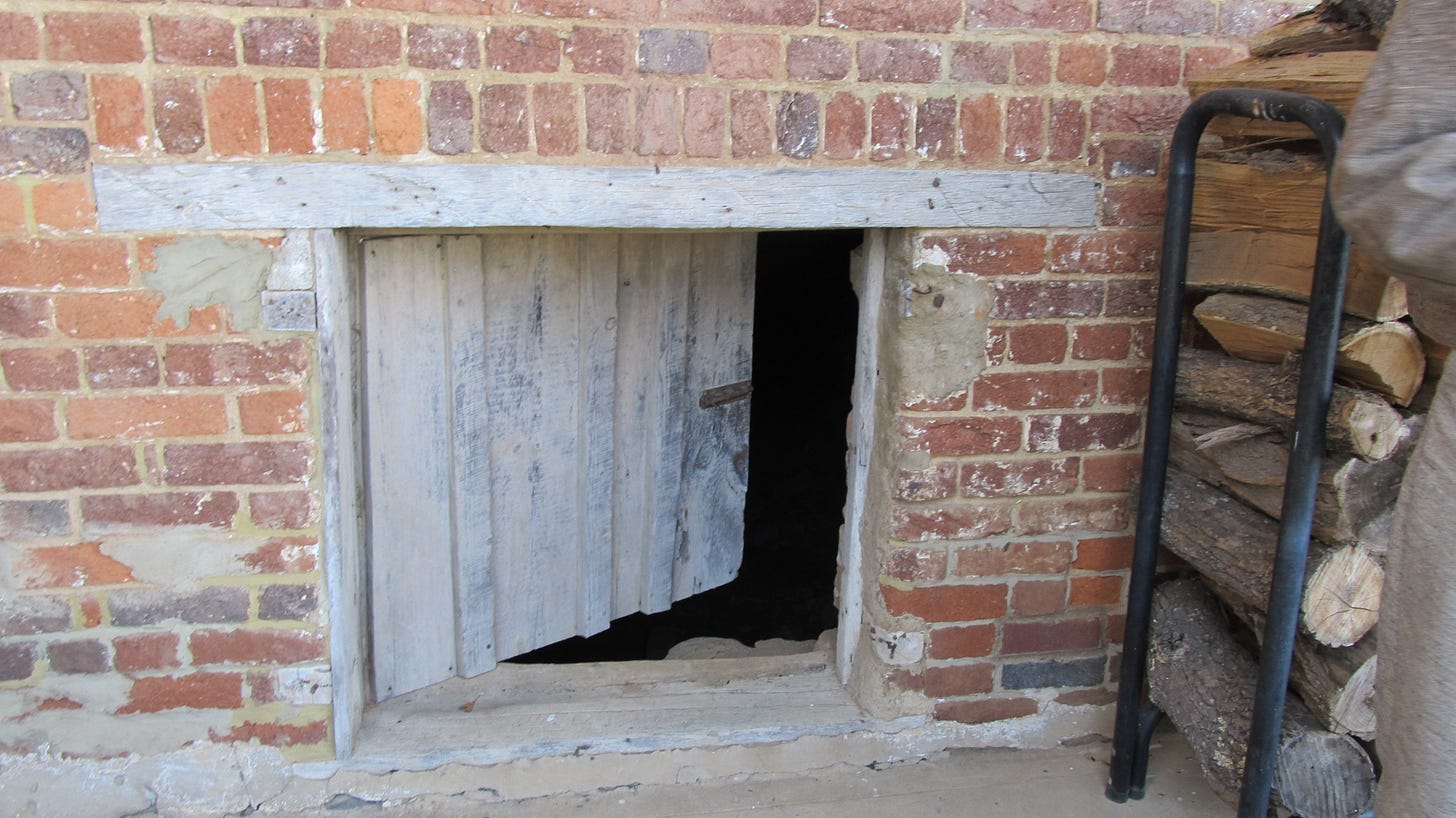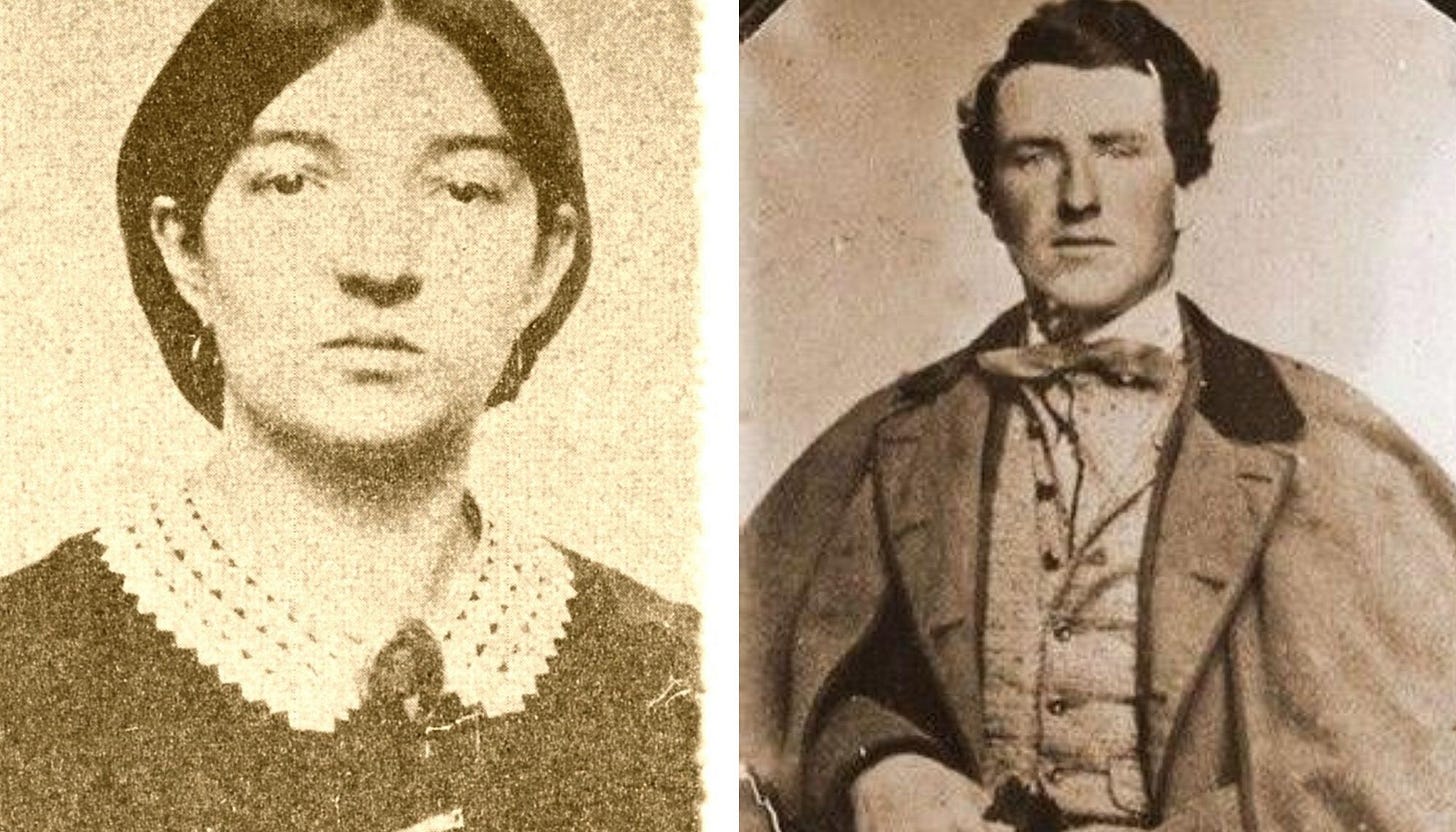Did you know that many of the houses that date back to the Civil War in Virginia have secret rooms and “hidey holes” that were used to conceal Confederate soldiers from the Yankees?

Thanks to the Piedmont Heritage Area (name changed from the Mosby Heritage Area in 2021), I had the opportunity to tour the private home called Belle Grove a few years ago. This house was once the residence of Civil War diarist Virginia “Tee” Edmonds, whose brothers rode with the famous Mosby’s Rangers—commanded by Colonel John S. Mosby.

Because of the nature of their raids, Mosby’s men stayed in the homes of local residents rather than in regular army camps. Since Tee’s brothers served with Mosby, Belle Grove was rather like a perpetual house party during this period. And “Tee,” in her mid-twenties was at that age when she was looking for love.
Written between the years 1857 and 1867, her diary gives great insight to the fun, fear, anguish and excitement that occurred before, during and after the Civil War. Instead of telling a story from the battlefield, her entries takes readers into the parlor and onto the porches, reminding us of the ordinary people who lived during this tumultuous time.
Not shockingly, military men appear on almost every page from the years 1861 through 1865. Tee also kept an autograph album, which became the rage during the Civil War. Men from all over the Confederacy signed their names and commented on its pages, helping to document a uniquely personal war.
One entry in Tee’s diary says: “I can look back when the war is over and recall some of the happiest moments of my life—yes, even amid the terrible war with all its sorrow and grief. I have spent many happy days full of change, variety and romance...”
Belle Grove House Tour
As many of you probably know, the main character in my historical fiction novel Shades of Gray is based on Mosby and his exploits in what was known as “Mosby’s Confederacy.” When I was writing the novel I traveled down to Virginia at least once a week to explore the many dirt roads in Loudoun and Fauquier counties where Mosby and his men once traveled. Getting the chance to visit a home where Mosby’s Rangers stayed and congregated was quite a treat.
Located near Paris, Va., the house sits in a region that was strategically important to both the Union and Confederate armies. Built in 1812, Belle Grove commands an enchanting view of the Blue Ridge Mountains and its foothills, as well as the Winchester-Warrenton Turnpike (currently Rt. 17).
Albert Sydnor Edmonds, a descendant of the original family, described the features of the mansion house writing:
“The front door with its pilasters and stop-fluting and the fanlight above the door, is one of the finer doorways in Virginia. The interior has a complete stairway to the third floor, and fine carved mantels of different designs for each of the six fireplaces in the main portion.
Luckily, there have been few changes to mar the beauty of the house. The floors are of wide pine and the doors are walnut. The entrance double doors and the back hall door have brackets to hold a heavy wooden board to keep out intruders.
The room that is currently used as a dining room was the bedroom of Tee’s parents during the War Between the States. Every room has a fireplace and the floors and woodwork are exquisite.
A long porch runs all across the back of the main house, with a more formal front porch and a latticed porch across the front. The attic, with its hand hewn rafters, served as the spinning and weaving room.
In her diary “Journals of Amanda Virginia Edmonds,” Tee talks about using the large front hall and the parlor for dances, and I can imagine her sitting in what is still the library to write in her diary.
I can also imagine the Rangers who lived their thundering down the stairs and running to the trap door located in the old dining room at the sound of hoof beats echoing from the lane as Yankee troops approached.
The ‘Hidey Holes’
Because members of Mosby’s Rangers stayed in the house in between their cavalry excursions, it was necessary to have a quick way to escape if someone noticed the enemy riding in from the Turnpike at the end of their long lane. Of course, many of the houses in Mosby’s Confederacy still have these “hidey holes,” but this one is especially interesting because it is mentioned in Tee’s diary.
Apparently, the three-foot cellar area under the dining room was the main hiding place at Belle Grove, accessed by a trap door under a rug. From the cellar, the Rangers would make their escape through a small door on the side of the house, strategically concealed from view by a stack of firewood.
Here is one account of an encounter with the Yankees in February of 1864, as told by Tee in her diary:
“Much to our surprise, mortification and sorrow the slumbers of the household were aroused by the rattling of swords and the clatter of horses, which fortunately made known to our dear soldiers that something was wrong. Bud jumped from his bed and there to his utter surprise were Yankees dashing up. Bud with Mr. Alexander and George dashed down the stairs to their secret hiding place followed by overcoats, pistol and everything I could grab up—for time was short. The Yankees were all around the house and every moment we expected them to bolt into the house. All was done in a moment, and now, when I look back, I shudder to think how narrow an escape they made.”
Unfortunately, although most of the men staying the house got away, two of them were found just as the Yankees were riding away. They were taken prisoner, but later exchanged.
The Romance
There is no outright love affair written in the pages of Tee’s journal, but there are hints of one, which made my visit to the house all the more poignant.
Love and war. A past so fresh in my mind from reading Tee’s book that it seemed close enough to touch.
I couldn’t help but thinking that it was on the same porch in October 1861 that Mathew Magner (always referred to as ‘Mr. Magner’) rode up on his horse Preacher, and invited Amanda to “come and hear the birds singing praises to their Maker.”
And it was on the same porch in February 1864, that Tee defied Union officers as they searched all through the house for Mosby’s men. From this house, two loved ones were dragged away with no one knowing what the future might hold.
And from this house on October 2, 1865, Tee watched Mathew Magner leave Bell Grove for the last time on his way back home to Mississippi.
A letter written in July of 1866 from Mr. Magner to Tee is inserted in the back of the published diary. The letter ends with: “No, I have not forgotten our many pleasant rides nor ever will. Neither have I lost or thrown away the hearts. But one of them is very dilapidated.”
Two months later Tee would learn that her favorite soldier had died of Yellow Fever.
Walking through the house brought to mind images—and even sounds. Drums. Violins. Galloping horses...and whispers of love. If only the walls could talk.
Family Cemetery
Tee died at Belle Grove on July 13, 1921 and is buried in the family cemetery, which lies a short distance from the main house. Tee’s parents and two of her brothers, who rode with Mosby’s Rangers are also interred there.
I love walking through old cemeteries and reading the names, imagining the lives of those who rest there. The small family cemeteries are a great window to the past.
If you are interested in learning more about Amanda Edmonds and Mosby’s Rangers, reprints of her diary can be found online. Additionally, Lee Lawrence published a new version called Society of Rebels that is available.
I have my own copies of both editions. Besides being a travel enthusiast, I am also a book hoarder—I mean, collector. My old copy of Tee’s diary is signed by her granddaughter, which makes me somehow feel closer to her. And my new copy is signed by the editor, Lee Lawrence.
Other Nearby Historic Sites
During my excursion down to Mosby’s Confederacy from Gettysburg, I re-visited some other historic sites that were significant to Mosby’s Rangers.
Mt. Zion Church
Mt. Zion Church is located along Rt. 50 (Still the John Mosby Highway to me). This building was used as a Civil War hospital, and was the site of a fight between Mosby’s men and a Federal cavalry unit made up of about 150 men. Mosby’s men killed or wounded about 100 of the enemy. The battle is recounted in a number of books written after the war by Mosby’s Rangers.
In the cemetery attached to the church are the grave markers indicating the names of some of the Union soldiers who had died in the battle.
Aldie Mill
Continuing west on Rt. 50 is like taking a step back in time. Not far from Mt. Zion Church is the little village of Aldie, where the historic Aldie Mill is located. There was a cavalry clash here between Mosby and a Federal unit that has some funny anecdotes.
Another interesting feature of this town is the small stone bridge that lies under the highway. You probably wouldn’t notice it, since it’s impossible to see from the road, (unless you’re a Mosby fanatic and climbed around under the bridge).
Mosby’s horse ran away with him during the battle, over this little stone bridge, and straight toward the Federal line. It wasn’t due to courage—his horse was simply out of control—but seeing this single cavalryman riding boldly toward them caused the Federals to retreat.
Goose Creek Bridge
An even more spectacular bridge is located just a little farther west on the Mosby Highway. Goose Creek Bridge is a five-span stone bridge that was the site of another large battle during the Civil War, although this time Mosby’s Rangers were not involved. There is a nice pull-off to take pictures, as well as a scenic flower walk near the bridge. It’s a beautiful place to spend a sunny Spring day.
Also nearby is historic Middleburg, home of the Red Fox Inn where Mosby often visited, and farther up the road at Ashby’s Gap is Mt. Carmel Church, the site of another cavalry battle involving Mosby’s men.
There is lots of history all around us. Don’t forget to stop and soak it up.
Note: While Belle Grove is under private ownership, the adjoining property, which was the home of Amanda's Aunt Mary and Uncle Abner Settle was donated to The Commonwealth of Virginia in 1975 by Paul Mellon of Upperville, and is now, "Sky Meadows State Park."
Disclaimer: This page contains affiliate links. If you choose to make a purchase after clicking a link, I may receive a commission at no additional cost to you. Thank you for your support!









